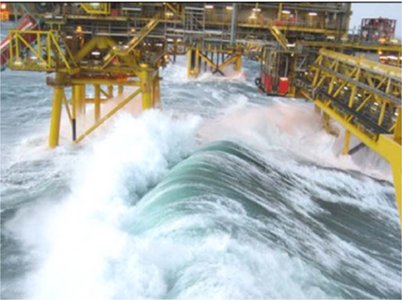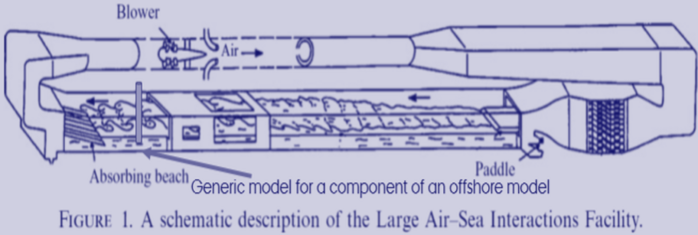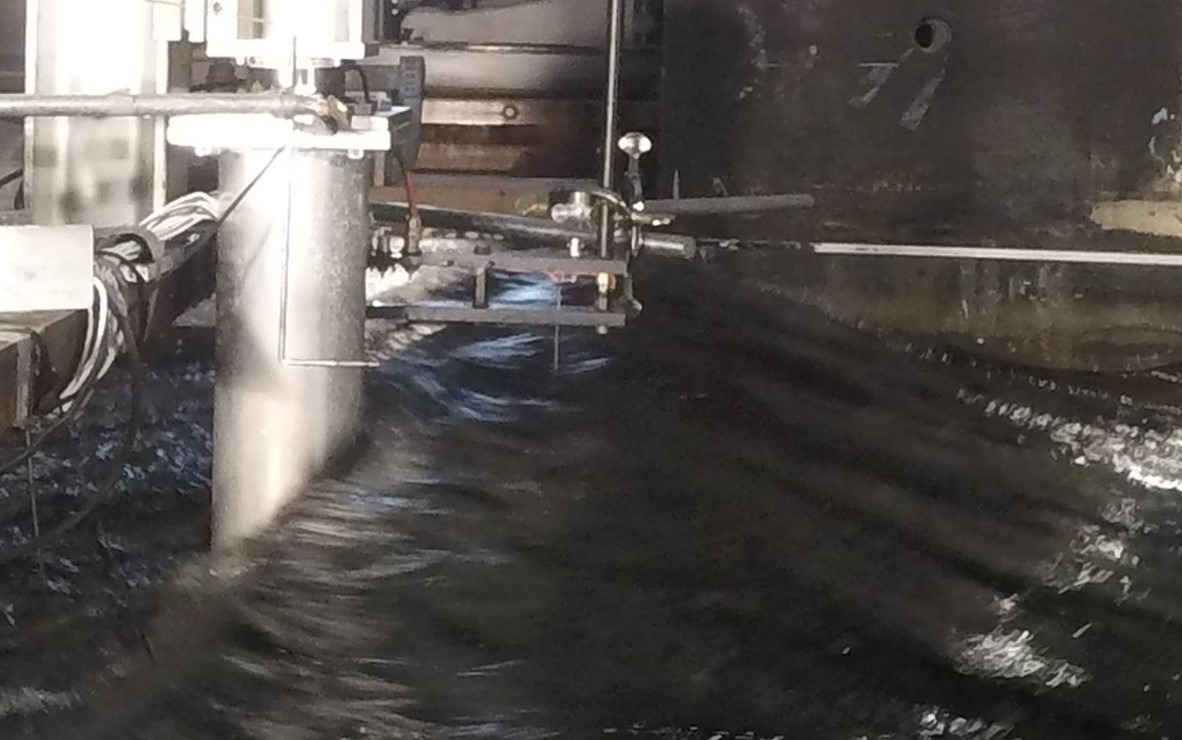This project concerns experimental investigation on loads from extreme waves on offshore structures. The design load may not be conservative, as the occurrence of these extreme events might be more frequent than expected. Moreover, existing experimental work is conducted in facilities with absence of wind, whereas the experimental work performed in this project take the influence of wind into account, which may increase the occurrence of extreme load events.

When large waves breaks just in front of an offshore platform, a very high impulsive pressure is generated, which must be taken into account in the design of components and joints on offshore structures. The concern in the overall design of offshore structures as jacket structures, is on the dynamic amplification of the structural response due to the impulsive nature of forces from breaking waves.

Reference:
Tychsen, J., Fabricius, H., Ottesen, N., Stevanato, F. (2016). Summary of the impact on structural reliability of the findings of the Tyra Field extreme wave study 2013-15. The 3rd Offshore Structural Reliability Conference.
The design load for offshore structures is established from experimental or numerical investigations. When these are conducted, only the indirect effect of wind is taken into account. I.e. the wave spectrum is defined from fetch and wind speed. Nevertheless, the wind can have a direct effect on steep waves if airflow separation and vortexes develop above the waves. This can increase wave-induced loads or change the breaking probability for waves and thereby the load statistics. The matter was investigated in an experimental campaign in Large Air-Sea Interface Facility in Marseille, France.

Reference:
Homepage - https://www.osupytheas.fr/
An offshore platform’s design load for a 10.000 year wave is here determined through experiments with a circular cylinder model in a wind-wave-flume in the Large Air Sea Interaction Facility in Marseille. The model is fixed-fixed and equipped with load cells, pressure sensors and wave gauges as seen in the left figure below. As seen in the right picture below the effect of wind is an increase of the load in the tail of the exceedance probability curve for this sea state, however, the over all picture is more differentiated. From wave gauge measurement, the number of breaking waves are evaluated. Here the effect of the wind shows up as an increase in the number of breaking waves. Correspondingly, the tail in the exceedance probability curve for pressure, acceleration and dynamic force is increased, when wind is introduced. The final conclusion of the matter is still under evaluation, and is about to be presented in a paper.


